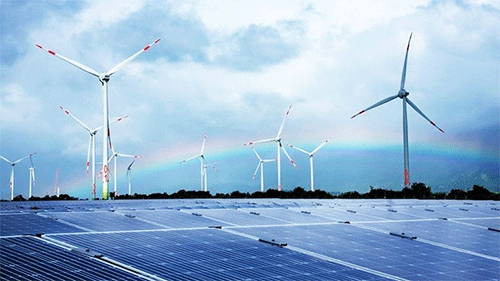 |
| A renewable energy complex in Ninh Thuan province. (Photo: VNA). |
The information was released in a recent study under the research programme on renewable energy jointly conducted by the Australian National University, the ASEAN Energy Centre, the Diplomatic Academy of Norway and the National Economics University, Hanoi.
The research shows that Vietnam's solar and wind power output increased from 4.7 TWh in 2019 to 9.5 TWh in 2020, equivalent to a 1.98% increase in total electricity output.
In Southeast Asia, Malaysia, Singapore and Indonesia posted lower growth than Vietnam while Thailand and the Philippines saw the decreases.
According to the research team, since 2019, Vietnam has surpassed Thailand to become the leading country in the application of solar and wind power in the ASEAN region.
Statistics from the International Renewable Energy Agency (IREA) show that Vietnam's total solar photovoltaic capacity reached about 16,500 MW by the end of 2020, far exceeding the target set by the government of 850 MW and even approaching the target of 18,600 MW by 2030.
Vietnam has the most ambitious wind power development plan in ASEAN with a projected target of 11,800 MW by 2025, while Thailand expects to hit 3,000 MW in 2036 and the Philippines targets 2,378 MW in 2030.
According to the research, the main drivers for Vietnam's success in solar and wind energy development include attractive electricity purchase prices from renewable energy producers, preferential income taxes and exemption and reduction of land rent in addition to the broad political and social support and favourable investment environment.
Source: NDO




















.jpg)




.jpeg)

.jpeg)


.jpeg)


